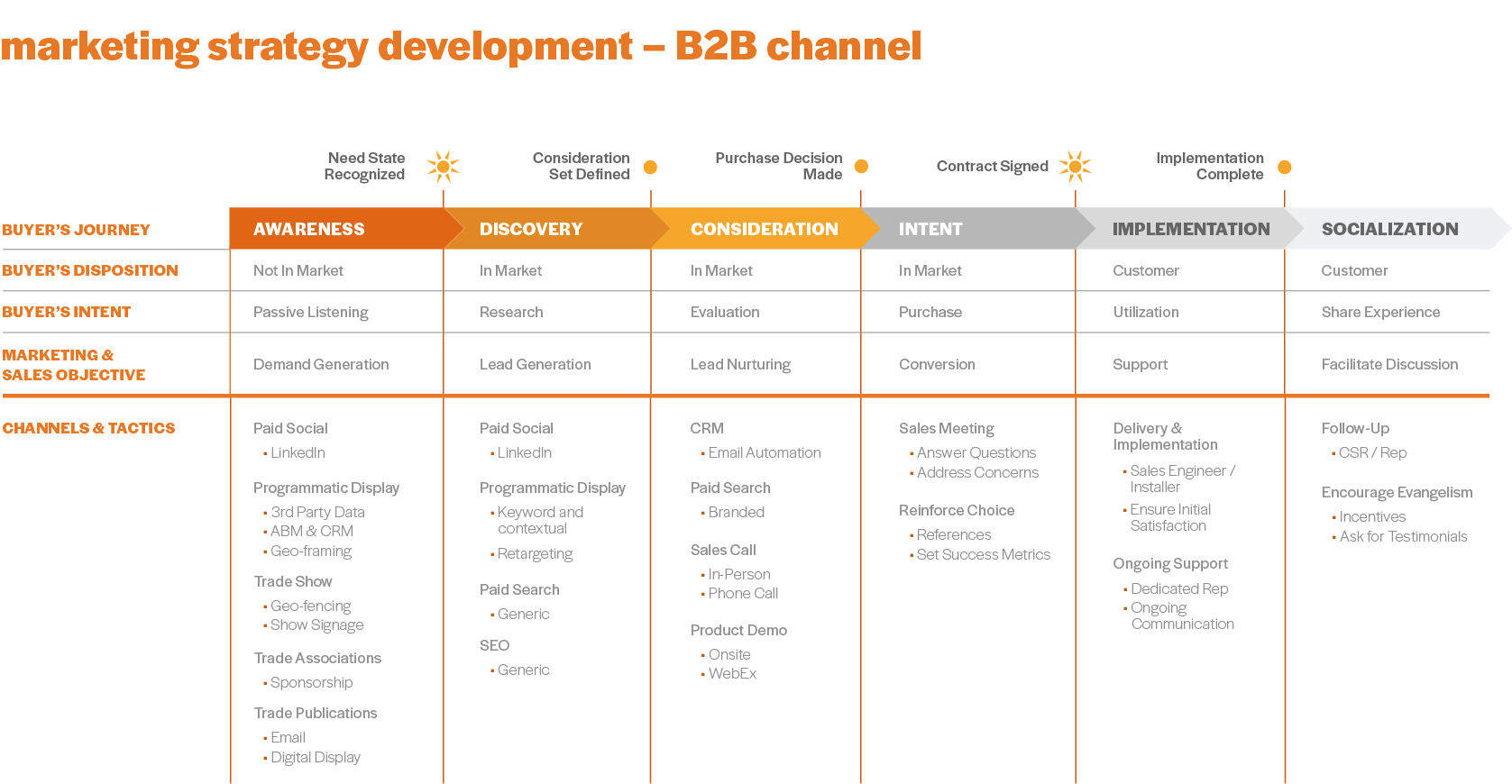Let’s be honest: Marketing and sales departments sometimes seem to be at odds, especially for companies like those in the building products industry selling to builders, contractors, architects, building owners and facility managers.
Even though their mission should be the same—to build awareness and equity with prospects and customers, drive preference and conversion and generate revenue—disconnects happen. That’s when it’s helpful to have an organizing principle that both the marketing and sales teams can align their efforts around.
At The Motion Agency, we encourage our clients to use the buyer’s journey as the foundation of how both teams come together and agree on a cooperative approach. Aligning marketing and sales around the buyer’s journey not only creates a real partnership that fosters better dialog and more effective overall efforts, but it can also boost sales results and increase revenue.
The Buyer’s Journey: Where to Start
Alignment begins with marketing and sales leaders agreeing on these outcomes:
- What the sales goals are
- How marketing qualified leads (MQLs) and sales qualified leads (SQLs) are defined
- How many qualified leads it will take to generate revenue targets
- How target audiences make their decisions about what products and services to buy
Remember, there can be multiple buyer profiles and key influencers, especially in the building products category. If your product is commercial grade cladding, for example, you would consider the buyer’s journey for specifying architects, builders and facility owners and managers. Each audience might have a slightly different path.
Here are some basic steps to help get you started with mapping out the buyer’s journey in order to ensure that marketing and sales efforts are working toward common goals.
How to Align Marketing & Sales Efforts to the Buyer’s Journey
Start with a discussion between marketing and sales about the steps your prospective customers take, from awareness through close, loyalty and evangelism. In B2B buying, this often consists of:
- Awareness
- Discovery
- Consideration
- Intent
- Implementation
- Socialization

For each of these steps, the following things should be identified:
Buyer’s Disposition
Is the buyer:
- In-market
- Not yet in market
- A current customer
- A former customer
Buyer’s Intent
Is the buyer:
- Passively listening
- Researching
- Evaluating
- Purchasing
- Using
- Sharing their experience with you
Marketing & Sales Objectives
- What is it that these teams need to do in order to get the buyer to the next step in the process?
- If the prospect is researching your and your competitors’ offerings, what will it take to get them to the evaluation stage?
- What does evaluation look like for your industry and prospects (trial, online demo, sales call, plant visit, etc.)?
At any given step, what is the role that marketing can play, and what can the sales team do?
Use these steps and questions to create a baseline map of the buyer’s journey and what it will take to move buyers through it. The framework could look something like this:

With a buyer’s journey map in hand, it’s easy for marketing and sales to understand and agree on where each team can contribute to moving buyers through the purchase process. This creates the foundation of alignment between marketing and sales that will ultimately enhance the efforts of both teams, close more business and generate increased revenues.
The Motion Agency has helped a number of marketers work with their sales team to map out the buyer’s journey and determine the appropriate roles for both teams. If you’re interested in learning more about getting started or just want more information, contact Carie Pflug.